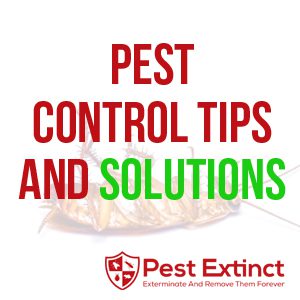
Different Types of Ants to Look Out For at Your Home
As a leading connector between homeowners and pest control companies, we at Pest Extinct understand the importance of being informed about common household pests, particularly ants. These tiny invaders can be more than just a nuisance; they can pose significant health and property risks. In this guide, we’ll delve into the different types of ants you might encounter at home and why it’s crucial to recognize them early.
Understanding the Ant Invaders: A Homeowner’s Guide
Carpenter Ants: The Wood Destroyers
Appearance: Large, black or dark brown ants
Why they’re a concern: Unlike termites, carpenter ants don’t eat wood but excavate it to build their nests, which can lead to structural damage over time. They are attracted to moist wood, so they often signal a moisture problem in your home.
Key signs of infestation: Piles of wood shavings, faint rustling noises within walls, and large winged ants emerging from structures.
Pavement Ants: The Underfoot Army
Appearance: Small, dark brown to black ants
Why they’re a concern: Commonly found under pavements and foundations, these ants can enter homes through cracks. They are not directly harmful but can contaminate food.
Key signs of infestation: Trails of ants moving to and from food sources, especially in kitchens.
Fire Ants: The Painful Pests
Appearance: Reddish-brown, aggressive ants
Why they’re a concern: Fire ants are notorious for their painful stings, which can be dangerous to those with allergies. They typically nest outdoors but can venture indoors.
Key signs of infestation: Mounds of soft soil outdoors, sudden, painful stings when disturbed.
Odorous House Ants: The Smelly Invaders
Appearance: Small, brown to black ants
Why they’re a concern: These ants emit a rotten coconut-like smell when crushed. They are attracted to sweets and moisture, making kitchens their favorite target.
Key signs of infestation: Consistent ant trails, especially near sweets and areas of moisture.


Pharaoh Ants: The Disease Carriers
Appearance: Small, light yellow to red ants
Why they’re a concern: Pharaoh ants are known for spreading diseases. They are difficult to control as they create multiple nests and can split their colonies.
Key signs of infestation: Trails in all areas of the house, especially in bathrooms and kitchens.
How Pest Extinct Can Help
At Pest Extinct, we connect you with experienced pest control professionals who can identify the specific type of ant infestation and provide tailored solutions. Remember, early detection is key to preventing significant damage and health risks. If you spot any of these signs, don’t hesitate to contact us for a quick and effective resolution.






Stay Informed, Stay Protected
Understanding the types of ants that may invade your home is the first step in effective pest control. For more information on pest management and to find the right pest control solution for your needs, visit our website or contact us directly at Pest Extinct.
Preventive Strategies to Keep Ants at Bay
Protecting Your Home from Ant Infestations
While connecting with a professional pest control service is crucial for handling existing ant infestations, prevention is always better than cure. Here are effective strategies to minimize the risk of ants invading your home.
Maintain a Clean Kitchen
Why it’s important: Ants are primarily attracted to food sources. A clean kitchen minimizes the attractants.
Tips for prevention:
- Regularly wipe down counters and sweep floors to remove crumbs and spills.
- Store food in sealed containers, especially sweets and baking ingredients.
- Regularly dispose of garbage and use bins with tight-fitting lids.
Eliminate Moisture and Standing Water
Why it’s important: Many ant species are attracted to moisture, making damp areas ideal for nesting.
Tips for prevention:
- Fix leaky pipes and faucets promptly.
- Use dehumidifiers in damp areas like basements.
- Ensure good ventilation in moisture-prone areas.
Seal Entry Points
Why it’s important: Ants can enter through the tiniest of openings. Sealing these can significantly reduce the likelihood of an infestation.
Tips for prevention:
- Seal cracks and crevices around doors, windows, and foundations.
- Install door sweeps on exterior doors.
- Repair or replace damaged screens on windows and vents.


Tidy Up the Garden and Exterior
Why it’s important: Overgrown vegetation and debris near your home can serve as nesting sites.
Tips for prevention:
- Trim bushes and trees away from your house.
- Remove piles of wood, bricks, or other debris where ants can nest.
- Regularly check outdoor furniture and playsets for ant colonies.
Use Natural Deterrents
Why it’s important: Certain natural substances can deter ants without the use of harsh chemicals.
Tips for prevention:
- Use vinegar solutions for cleaning; ants dislike the smell.
- Place cinnamon sticks, coffee grounds, or peppermint oil in areas where ants are common.
- Sprinkle diatomaceous earth around the home’s perimeter.
Regular Inspections
Why it’s important: Early detection can prevent a minor ant problem from becoming a full-blown infestation.
Tips for prevention:
- Regularly inspect your home for signs of ants or their nests.
- Pay attention to damp areas or areas where food is stored.
- Schedule periodic professional inspections, especially if you live in an area prone to ant problems.
Partner with Pest Extinct for a Secure Home
Remember, while these preventive measures are effective, they work best in conjunction with professional advice and services. At Pest Extinct, we are committed to helping you maintain an ant-free home. Our network of skilled pest control professionals can provide further guidance and intervene when preventive measures fall short.
Prevention, Vigilance, and Professional Assistance: Your Best Defense Against Ants
By following these preventive tips and staying vigilant for signs of ant activity, you can significantly reduce the chances of an ant infestation. Combine these efforts with the expertise and support of Pest Extinct, and you can rest assured that your home remains a comfortable, ant-free environment.

Leave a Reply